| Umělec magazine 1998/5 >> Report from San Francisco | List of all editions. | ||||||||||||
|
|||||||||||||
Report from San FranciscoUmělec magazine 1998/501.05.1998 Tim Gilman-Ševčík | san francisco | en cs |
|||||||||||||
|
Art has been putting on a new face recently in San Francisco, turning rouged cheeks to the eye of the media and the public. For a city renowned for the predominance of the alternative space, the legitimization of alternative space tendencies in formal institutions, which David Ross has come under fire for at the Whitney Museum in New York, has been thoroughly embraced, and succeeds at attracting the public with unabashed populism. David Ross has figured large in local and national headlines for resigning from the Whitney and moving back to his roots in San
Francisco, where he now heads the San Francisco MOMA. Though it is approximately the same size as the Whitney, it dominates the San Francisco scene, and is even more prestigious for the fact that it is the second oldest contemporary art museum in the U.S. after the New York MOMA. His populist program which was criticized widely for de-formalizing and discrediting the gravity of the art institution in New York is well-received in San Francisco, which peacockishly flaunts its anti-stodginess. The first major show since Ross arrival, The Keith Haring Retrospective, was accompanied by PoP, a dance party that turned the lobby and Haring exhibit into a night club packed with SF clubkids. While the effort put into transforming the art space into a club was fairly minor and disappointing following all the hype, the line of ticketholders and ticketseekers ringed the museum in a way that no line for an art exhibition ever does. So the people want a party, image-heavy and media endorsed. And with Haring they get it. Not only was a full-scale advertising campaign launched with TV spots, posters, banners, and Haring sculptures all over the city, but the exhibition itself de-emphasized the work and emphasized the pop icon status that Haring achieved in his lifetime. The large-scale paintings with his signature style are interspersed with grade school drawings, the contents of his wallet, his tape collection, and other memorabilia which mark the exhibition as a history of Keith Haring, art star, rather than as an art exhibition. Though his work is questioned for its validity, his value as a marketing tool for attracting museum visitors is unquestionable, and fully exploited in the MOMAs program. The advertising agency happily reported that the museum called them telling them that only a month into the four month exhibition entrance ticket sales were up 36%, which had been their goal for the entire show. The financial success of such an institution seems to be beneficial, but as the separation between advertising, art and commodity (such as the booth selling Haring paraphernalia set up right in the middle of the exhibition) disappears even within the museums walls, one questions how art will distinguish itself as critic or competitor among the louder, stronger and more popular forces of media and marketing which so easily and quickly subsume it. Ross reception in San Francisco has been enthusiastic, and people believe he will bring youth and energy to the museum, according to Renny Pritikin, chief curator at the Yerba Buena Center for the Arts. Pritikin observed that the SF MOMA PoP Party was not unusual in the city, because the opening parties at Yerba Buena have turned the gallery space, which is just across the street from the MOMA, into the place to be in the city that night. The latest opening party, however, suffered from only 50% of the usual attendance of 2500. It took place only two weeks after the Haring party. Of the shows just open at Yerba Buena, Martin Kersels was the most attractive name. However, the nature of his sound work defuses the effectiveness of the survey format within which his work is displayed. The space is dominated by his Loud House piece, a corrugated steel building which booms, shakes and shutters as a monitor on the roof shows the very large artist spinning in circles and falling to the floor. This and other sound pieces, such as the clever Attempt to Raise the Temperature of a Container of Water by Yelling at It, cancel each other out - both figuratively as Kersels again and again tells us that he is huge, overweight and sticks out, and physically, as the noise level of one piece drowns out the sound of another completely. The work, interspersed with other work and seen as a counterpoint, a disturbance, an interruption, would emphasize the potential and provocation of the work, rather than turn it in on itself. This is most clearly seen in Objects of the Dealers with Soundtrack, where Kersels has rigged his dealers office space with looping soundtracks that start anytime they are used. These would create a hilarious din, especially if you pick up the phone, open the drawer, and get a fax all at the same time, if only a greater din weren’t surrounding you in the exhibition space. The Halflifers (Anthony Discenza and Torsten Z. Burns) installation, Barnlanders, was the most exciting piece installed at 49 Geary since I have been in San Francisco. It consisted of two prefab barn/sheds lying on their sides and opening like a clam, to reveal the nerve-center of Halflifer operations. The Halflifers exist in a permanent flux of emergency and recovery, where ritualized disasters are catalogued and explosively re-staged. They approach the world as helpful and heroic children, with a Play Skool aesthetic, thrown into a world as disaster-prone as the nightly news. They equip themselves in all manner of necessary gear for survival and rescue - bundles of shovels, extension cords, utility lights, and safety goggles, and get ready to go on a heroic mission to save the self by any means necessary. The ludicrous states of preparation and action, illustrated between the barn installation and the videos of recent adventures, create a world caught in a construction of television and reality, out of tune, but earnest and hopeful as shown by their efforts to do battle with their disastrous normal existence, which as we can see is simultaneously too far away from our reality, and too close.
01.05.1998
Recommended articles
|
|||||||||||||
|
04.02.2020 10:17
Letošní 50. ročník Art Basel přilákal celkem 93 000 návštěvníků a sběratelů z 80 zemí světa. 290 prémiových galerií představilo umělecká díla od počátku 20. století až po současnost. Hlavní sektor přehlídky, tradičně v prvním patře výstavního prostoru, představil 232 předních galerií z celého světa nabízející umění nejvyšší kvality. Veletrh ukázal vzestupný trend prodeje prostřednictvím galerií jak soukromým sbírkám, tak i institucím. Kromě hlavního veletrhu stály za návštěvu i ty přidružené: Volta, Liste a Photo Basel, k tomu doprovodné programy a výstavy v místních institucích, které kvalitou daleko přesahují hranice města tj. Kunsthalle Basel, Kunstmuseum, Tinguely muzeum nebo Fondation Beyeler.
|







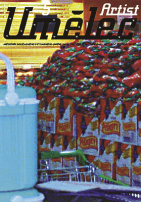











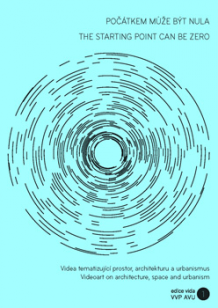




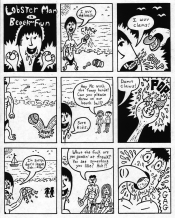
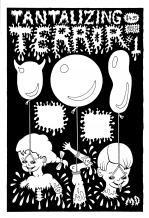
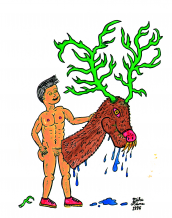
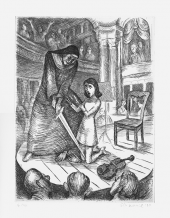


 New book by I.M.Jirous in English at our online bookshop.
New book by I.M.Jirous in English at our online bookshop.
Comments
There are currently no comments.Add new comment